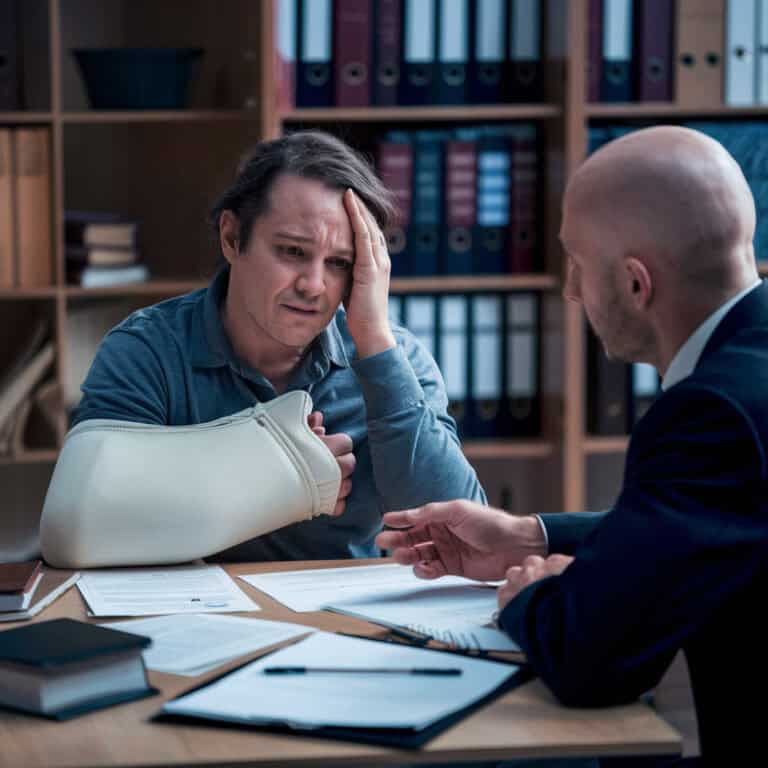Picture this: you’re cruising down the highway, tunes up and not a care in the world, until bam—a fender bender snaps you back to reality. Now your ride’s got more than just battle scars; it’s taken a hit in value that no repair can fully erase. That’s right, we’re talking about the diminished value of car after accident.
Your set of wheels may look as good as new post-repair, but savvy buyers sniff out an accident history faster than fresh coffee on a Monday morning.
If you’ve ever felt like David squaring off against Goliath when dealing with insurance companies over property damage claims or fretted about how much cash is slipping through your fingers because someone else dinged your bumper, stick around. We’ll dive into Maryland’s unique stance on claiming the diminished value of car after accident and shed light on some figures that could have potential buyers knocking at your door again.
Table Of Contents:
- Understanding Diminished Value of Car After an Accident in Maryland
- Calculating Diminished Value Using 17c Formula
- Calculating Diminished Value Using 17c Formula
- Filing a Diminished Value Claim in Maryland
- Legal Framework Surrounding Maryland Diminished Value Claims
- FAQs in Relation to Diminished Value of Car After Accident
- Conclusion
Understanding Diminished Value of Car After an Accident in Maryland
When your car takes a hit, so does its wallet appeal. That’s right, even after the dents are gone and the paint is polished, your ride might still whisper tales of past accidents to potential buyers. We call this little secret ‘diminished value,’ and it can mean that selling your car post-accident could fetch you fewer greenbacks than expected.
Immediate Diminished Value Explained
The moment metal crumples, your vehicle’s worth takes a nosedive – we’re talking about immediate diminished value here. Picture this: You’ve had an accident; there’s broken glass everywhere but not a repair truck in sight yet. Your car has lost value faster than my Aunt Mabel at a Vegas slot machine—because damage is visible for all to see.
This drop in price tag happens before any wrenches get turned or parts replaced—it’s like trying to sell tickets to a concert when everyone knows the lead singer just stormed off stage.
Inherent Diminished Value Clarified
Akin to our good ol’ friend gossip—once word gets out, it sticks around. The same goes for cars with accident history—even if they look as new as on their showroom debut day—their inherent diminished value lingers because savvy buyers often consider them riskier investments compared with vehicles boasting clean records.
Your repaired beauty may sparkle under streetlights; however, mention “car accident” and watch how quickly those potential buyers turn into sprinters fleeing from commitment—a scenario no seller wants.
Repair-Related Diminished Value Uncovered
Sometimes repairs themselves can leave scars on your vehicle’s market allure—that’s what we refer to as repair-related diminished value. Imagine handing over Michelangelo’s David statue fresh from restoration only for folks to spot putty holding his sling together—not quite the masterpiece it once was.
Likewise, shoddy bodywork or mismatched paint jobs scream “I’ve been patched up.” louder than teenagers bragging about weekend escapades—reducing buyer confidence along with offering prices.
Calculating Diminished Value Using 17c Formula
Don’t let the technical terms alarm you. It’s all about figuring out how much your car’s value dropped after an accident. We’re talking a simple step-by-step process that even math-phobes can get behind. With this formula, you’ll become a whiz at assessing diminished value in no time—giving you the edge when it comes to insurance claims or resale.
Calculating Diminished Value Using 17c Formula
Ever wonder why your car doesn’t fetch the same price post-accident, even with a flawless repair job? It’s all about perception—and it’s called diminished value. Now, if you’re in Maryland and have been through the wringer of an auto accident, you’ll want to get cozy with something known as the 17c formula. This little number is like a secret decoder ring for figuring out how much your ride has slipped in worth.
First off, let’s find your car’s value before its bumper-to-bumper smooch. Think of this step as setting up base camp before scaling Mount Everest—it’s crucial. You’d check sources like Kelley Blue Book to pin down what fair market value means for your motor chariot. Remember though; every vehicle tells its own tale on the open road—so factor in those miles too.
The next move is applying damage multipliers—think of them as dings against your car’s dating profile after that unfortunate swipe right into another vehicle. These bad boys range from 0 (no structural damage) to 1 (it’s toast), adjusting how much cash falls out of your pocket because nobody wants a date with history.
Immediate Diminished Value Explained
Bam. The moment metal meets metal—or tree or deer—the immediate loss kicks in faster than regret at an all-you-can-eat buffet after promising yourself just one plateful. But here comes the kicker: this type isn’t often claimed since insurers tend to cover only inherent losses—which brings us smoothly onto our next point.
Inherent Diminished Value Clarified
Your freshly repaired set of wheels may look minty fresh but carry around an invisible ‘I’ve had work done’ sign detectable by savvy buyers and eagle-eyed insurance adjusters alike. That lingering doubt pulls down resale values like gravity on sagging pants—it’s inevitable.
Repair-Related Diminished Value Uncovered
Last up is when repairs add insult to injury quite literally; think mismatched paint jobs or aftermarket parts where factory gems once sat—a definite no-no if ever there was one. If shortcuts were taken during fix-up time then expect potential buyers or dealers giving you side-eye glances while questioning what else might be lurking beneath that shiny exterior.
Using the mileage multiplier from Georgia’s recognized formula, we simplify the process for you. This approach is grounded in a solid legal framework, ensuring accuracy and fairness in our calculations. So rest easy; with this trusted method on your side, you’re in capable hands.
Don’t let an accident devalue your car without a fight. Learn the 17c formula in Maryland to gauge how much value your car lost post-crash. Consider factors like mileage and repair quality, since buyers will be wary of cars with a past.
Keep it simple: savvy buyers can spot repairs from miles away, which means lower resale values for you. Use Georgia’s trusted method to make sure you’re not left out of pocket after those unavoidable fender benders.
Filing a Diminished Value Claim in Maryland
Got into a car accident in Maryland? Your vehicle might look good as new post-repair, but what about its value? That’s where filing for diminished value comes into play. It ensures you’re not left out of pocket because your ride has an accident history now.
Contacting Your Insurance Provider
The clock starts ticking the moment metal crumples—Maryland gives you three years to file that claim. So don’t dawdle; call the insurance company pronto and let them know about the mishap and your intent to claim diminished value. You’ve paid diligently for your auto insurance policy, right? Time it pays you back.
Once on the line with your insurer, they’ll likely ask for details: when did this fender bender happen? Got any photos or reports handy? After sharing all that jazz, wait to hear from the insurer on how they want to proceed with assessing property damage. Remember, patience is more than just a virtue here—it’s part of getting what’s owed.
Gathering Documentation & Evidence
To get anywhere near fair market compensation after such setbacks involves proving actual loss—and boy does paperwork help. The devaluation isn’t visible like those scratches were so grab every shred of evidence possible: repair bills showing reasonable cost spent making things right again and even expert witness statements if needed (because sometimes you gotta bring out the big guns).
If we’re talking numbers—and we are—the minimum property damage coverage required is $15 grand in Maryland. But here’s something many forget: throw potential buyers into this equation too. They won’t pay top dollar knowing there was previous drama under those shiny hubcaps—a fully repaired vehicle doesn’t erase minds.
Drafting a Demand Letter
Itching to pen down some serious words demanding justice—or well…money—for that sudden dip in your car’s market worth due to no fault of yours? Draft up one mean demand letter explaining why their client owes you money (looking at you, at-fault driver). Be sure it reads clearer than morning skies over Chesapeake Bay—clarity could mean cash.
In this note include estimates from credible sources like DVCheck.com, who specialize in calculating how much vroom-vroom lost its zoom-zoom financially speaking after being hit—even though Frederick Motors got it purring again like nothing happened.
Negotiating With Insurance Companies Required Savvy Moves
Persistence Pays Off: You’ve heard stories where someone says “insurance companies don’t really have your back when you need them most.” But, it’s crucial to remember that these are individual experiences and may not represent the whole picture. Before signing up for an insurance policy, it is essential to comprehend what’s covered, not included and how the insurer deals with claims. Before signing on the dotted line, ensure that you are fully informed about all of the relevant details.
Legal Framework Surrounding Maryland Diminished Value Claims
If you’ve ever played bumper cars, you know the thrill of a little crash without consequences. But in real life, even if your car gets fixed up and looks brand new after an accident, its wallet appeal takes a hit — that’s diminished value for you. In Maryland, this isn’t just shop talk; it’s about getting what’s fair.
Maryland Diminished Value Law
First things first: don’t get mixed up between third-party claims and what we call first-party foul-ups. If another driver dents your day (and your vehicle), that’s where Maryland law shines bright, allowing you to seek recovery through a third-party claim as long as you’re not the at-fault party. Sorry to say though, if it was on your own watch? No dice—first-party claims aren’t recognized here.
Summary – Maryland Diminished Value Claims
Personal injury laws are rarely one-size-fits-all – especially when we’re talking about something as nuanced as car values post-collision. You’ll want to keep some key stats locked down tighter than Fort Knox to know claim worth:
- Marylanders have three years from the date of the accident to file their claim—that’s non-negotiable.
- Your property damage does not need to cross that $15k mark before they roll out the red carpet for any potential payout.
- The twist is in how much dough insurers will cough up for repaired vehicles versus those deemed total losses—and believe me, there’s plenty of grey area there.
Buckle up because proving inherent diminished value requires more detective work than Sherlock Holmes. It’s all about convincing skeptical jurors—or usually just tightfisted insurance adjusters—that although Dr.Watson did his best fixing her up (I mean…your mechanic), potential buyers still see past-life scars on ‘er chassis; hence why she won’t fetch top dollar anymore.
Maryland law allows recovery if not at fault
Ever wondered why everyone tells you never buy a used racecar? That speedster might look sleek but knowing it could’ve been driven harder than metal band drummers leaves buyers wary—same goes for regular ol’ cars with an accident history tucked under their hoods.
In good old Maryland, only those who aren’t at fault (aka “not-at-fault” parties) can breathe easy knowing they’re not on the hook for a car accident. If you haven’t done anything wrong, and another person’s misdeed leads to an accident involving you, then in Maryland there is no need to worry about being responsible for the resulting harm.
Contact an attorney for a free consultation to discuss a potential diminished value claim.
FAQs in Relation to Diminished Value of Car After Accident
How to calculate depreciation value of a car after an accident?
To figure out your car’s depreciation, subtract its pre-accident worth from the lesser post-repair value.
Do cars lose value after an accident?
Cars do take a hit in value following accidents, even with repairs done right.
How do I file a diminished value claim in MN?
In Minnesota, ring up your insurer and ask about their process for filing a diminished value claim.
Does Arizona have a diminished value law?
Arizona lets you chase down compensation for your ride’s lost worth if another driver caused the wreck.
Conclusion
So you’ve had a crash and your car’s worth took a nosedive. That sting is the diminished value of car after accident, but don’t fret; Maryland’s got your back if you’re not at fault, consult with an expert attorneys at Pinder Plotkin to help you. Remember those key points? Immediate, inherent, repair-related – they all chip away at your car’s market price.
Dig into that 17c formula to crunch some numbers on just how much value has skidded off the lot with your vehicle. It’s like putting puzzle pieces together: fair market value meets damage and mileage multipliers.
Filing that claim in Maryland doesn’t have to be a maze. Hit up your insurance provider pronto; time waits for no one with that three-year clock ticking down.
And let’s not forget legal smarts—Maryland law opens doors for third-party claims while keeping first-party ones locked tight. Use this knowledge as leverage when facing down those big-shot insurers who hold the purse strings to your rightful compensation.
Arm yourself with facts, stick to deadlines, and push through the paperwork jungle—your wallet will thank you later when potential buyers come calling once more.





